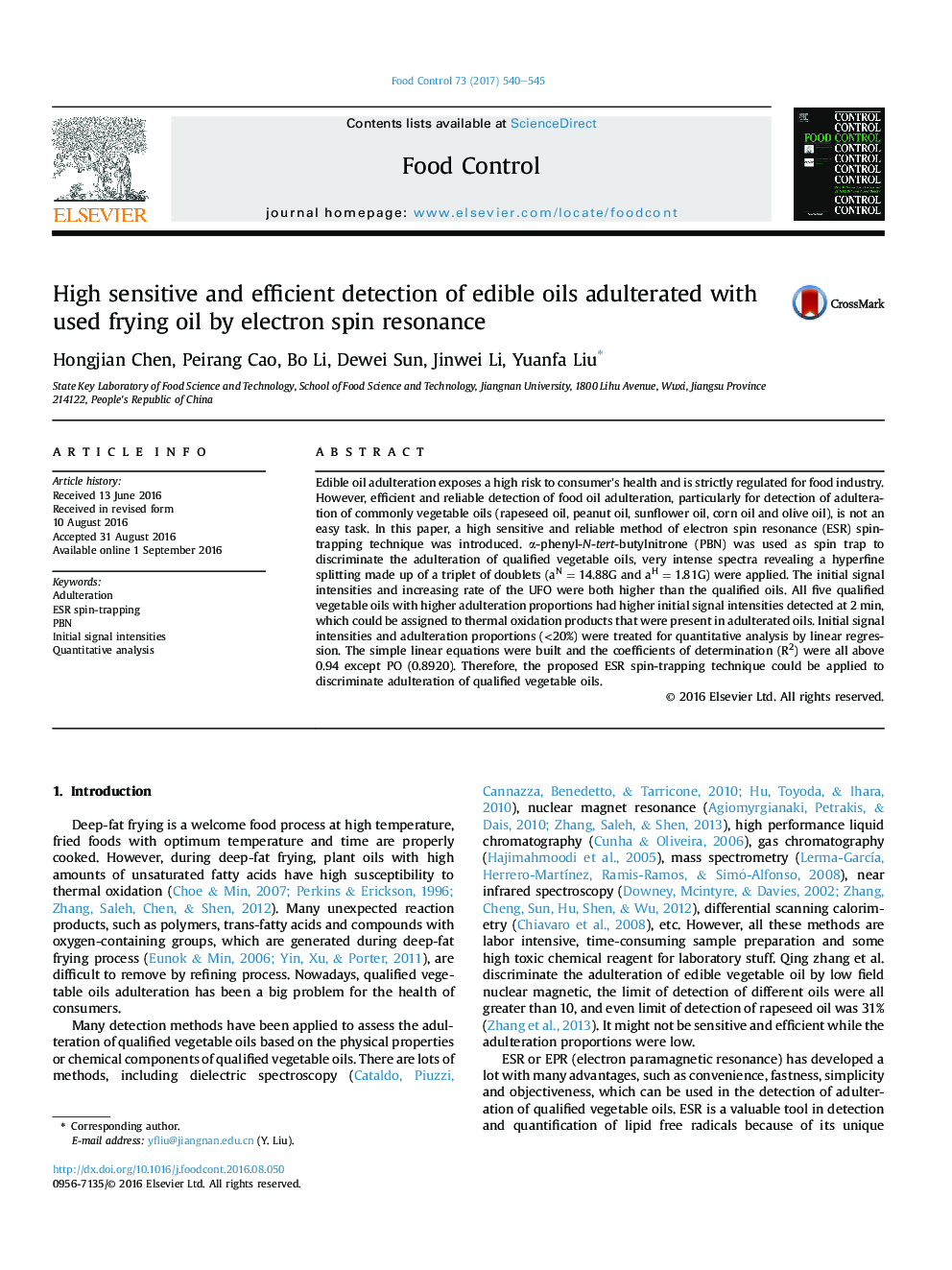| Article ID | Journal | Published Year | Pages | File Type |
|---|---|---|---|---|
| 5767675 | Food Control | 2017 | 6 Pages |
â¢The first time detection of oil adulteration by the ESR spin trapping technique.â¢The 2 min signal intensity as the detection symbol for adulteration.â¢High R2 for quantitative analysis with adulteration proportions â¤20%.â¢A high sensitive method with LOD ranging from 2% to 7%.
Edible oil adulteration exposes a high risk to consumer's health and is strictly regulated for food industry. However, efficient and reliable detection of food oil adulteration, particularly for detection of adulteration of commonly vegetable oils (rapeseed oil, peanut oil, sunflower oil, corn oil and olive oil), is not an easy task. In this paper, a high sensitive and reliable method of electron spin resonance (ESR) spin-trapping technique was introduced. α-phenyl-N-tert-butylnitrone (PBN) was used as spin trap to discriminate the adulteration of qualified vegetable oils, very intense spectra revealing a hyperfine splitting made up of a triplet of doublets (aN = 14.88G and aH = 1.81G) were applied. The initial signal intensities and increasing rate of the UFO were both higher than the qualified oils. All five qualified vegetable oils with higher adulteration proportions had higher initial signal intensities detected at 2 min, which could be assigned to thermal oxidation products that were present in adulterated oils. Initial signal intensities and adulteration proportions (<20%) were treated for quantitative analysis by linear regression. The simple linear equations were built and the coefficients of determination (R2) were all above 0.94 except PO (0.8920). Therefore, the proposed ESR spin-trapping technique could be applied to discriminate adulteration of qualified vegetable oils.
